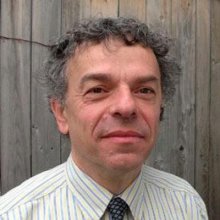 March 2, 2016 - 4:00 pm to 5:30 pm
March 2, 2016 - 4:00 pm to 5:30 pm Jeremy M Wolfe, PhD
Professor of Ophthalmology & Radiology, Harvard Medical School
Director -Visual Attention Lab, Center for Advanced Medical Imaging (Radiology)
Abstract: In a typical visual search task, you look for a target object amongst some non-target, distractor objects. In the real world, however, you often look for more than one thing at one time. In the supermarket, you might be holding a shopping list of 10 items in your memory. We will call this combination of visual search and memory search. “hybrid search”. In a basic hybrid search task in the lab, our Observers memorized 1-100 specific objects and searched for them in visual displays of 1-16 objects. Reaction Time (RT) was a linear function of the visual set size. RT is not a linear function of the memory set size. Rather, RT increases linearly with the log of the number of items in memory. What does the log function tell us about memory search? What is the roll of working memory? What happens if you are looking for categories of items (e.g. Find any animals, coins, or boats)? What happens if observers are foraging for multiple instances of multiple types of targets in a single display? By answering questions like these, the hybrid search paradigm gives us new insights into the interaction of object recognition, memory and visual attention in complex tasks.
